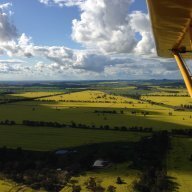Another poorly taught fact in training, stall speed increases with load factor. Increase in bank angle doesn't always mean increase in stall speed - don't pull (increase load factor) and stall speed won't increase, but your rate of descent will!
Poorly trained pilots will use shallow bank angles turning final to avoid stalling (I see this a lot during glide approaches). Then they use a boot full of rudder to "help" it around the turn, the yaw creates a roll which is then held off with aileron, drag increases, speed decreases, the aircraft gets nose heavy, pilot holds nose up.... flick, spin, crash and burn. All of the symptoms are there if you're aware of and looking for them. Under some circumstances a steeper banked turn is appropriate - much higher turn rate can compensate for the increased rate of descent, just don't let it get slow or load it up too much.
It's all about training and exploring the slow speed handling of each aircraft under safe conditions - safe height with an appropriately experienced person.


